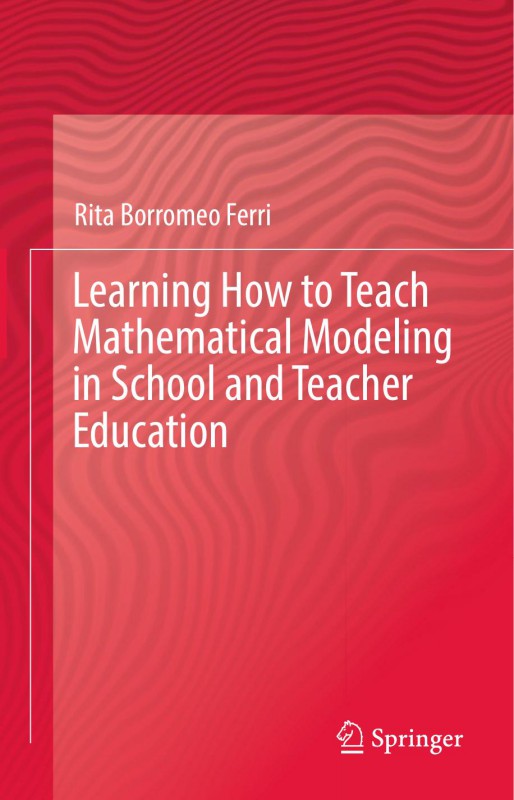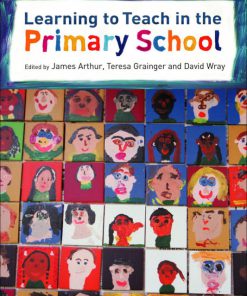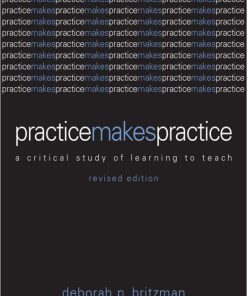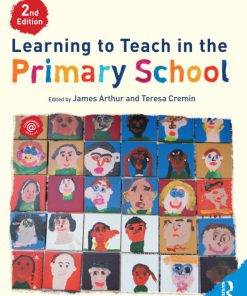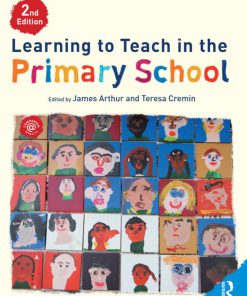(Ebook PDF) Learning How to Teach Mathematical Modeling in School and Teacher Education 1st edition by Rita Borromeo Ferri 3319680722 9783319680729 full chapters
$50.00 Original price was: $50.00.$25.00Current price is: $25.00.
Authors:Rita Borromeo Ferri (auth.) , Series:Education [291] , Author sort:Ferri, Rita Borromeo , Languages:Languages:eng , Published:Published:Nov 2017 , Publisher:Springer
Learning How to Teach Mathematical Modeling in School & Teacher Education 1st edition by Rita Borromeo Ferri – Ebook PDF Instant Download/DeliveryISBN: 3319680722, 9783319680729
Full download Learning How to Teach Mathematical Modeling in School & Teacher Education 1st edition after payment.
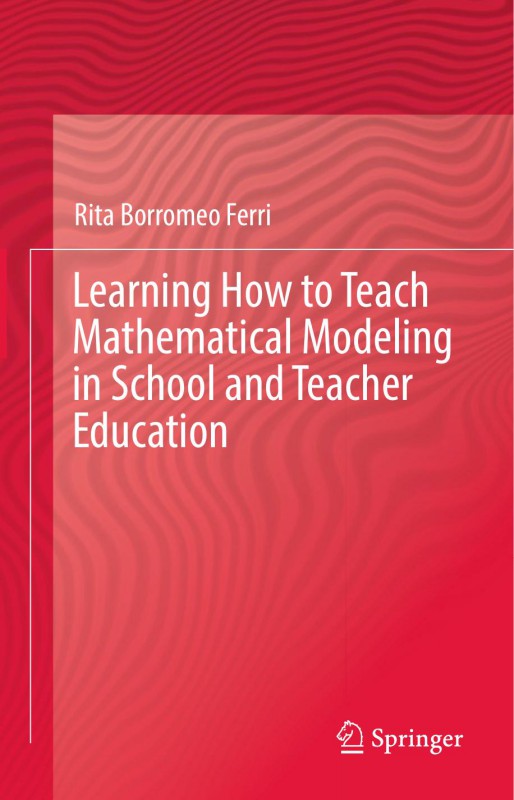
Product details:
ISBN-10 : 3319680722
ISBN-13 : 9783319680729
Author : Rita Borromeo Ferri
This timely resource fills a gap in existing literature on mathematical modeling by presenting both theory- and evidence-based ideas for its teaching and learning. The book outlines four key professional competencies that must be developed in order to effectively and appropriately teach mathematical modeling, and in so doing it seeks to reduce the discrepancies between educational policy and educational research versus everyday teaching practice. Among the key competencies covered are: Theoretical competency for practical work. Task competency for instructional flexibility. Instructional competency for effective and quality lessons. Diagnostic competency for assessment and grading. Learning How to Teach Mathematical Modeling in School and Teacher Education is relevant to practicing and future mathematics teachers at all levels, as well as teacher educators, mathematics education researchers, and undergraduate and graduate mathematics students interested in research based methods for teaching mathematical modeling.
Learning How to Teach Mathematical Modeling in School & Teacher Education 1st Table of contents:
Chapter 1: Key Competencies for Teaching Mathematical Modeling
1.1 Research in Teacher Education on Mathematical Modeling: Short Background
1.2 Mathematical Modeling Course for Educating the Educators: An Evaluated Module
1.2.1 Guiding Principle and “Pedagogical Double-Decker”
1.2.2 Structure of a Modeling Course for Teacher Education: Theory-Practice-Balance
1.2.3 Mathematical Modeling and Cooperative Learning
Chapter 2: Theoretical Competency: For Your Practical Work
2.1 What Does Mathematical Modeling Mean?: Goals and Aims
2.1.1 Real Situation (RS)
2.1.2 Mental Representation of the Situation (MRS)
2.1.3 Real Model (RM)
2.1.4 Extra-Mathematical Knowledge (EMK)
2.1.5 Mathematical Model (MM)
2.1.6 Mathematical Results (MR)
2.1.7 Real Results (RR)
2.1.8 Goals and Justifications for the Inclusion Mathematical Modeling in Everyday Teaching
2.1.9 International Perspectives on Mathematical Modeling
2.2 Modeling Cycle(s): A Multi-faceted Learning Instrument
2.2.1 Modeling Cycle from Applied Mathematics
2.2.2 Didactical or Pedagogical Modeling Cycle
2.2.3 Psychological Modeling Cycle
2.2.4 Diagnostic Modeling Cycle/Modeling Cycle from a Cognitive Perspective
2.2.5 Modeling Cycles Presented in Mathematics Standards: Exemplified Along the Common Core State
2.2.6 Mathematical Modeling Cycle as a Multi-purpose (and Metacognitive) Learning Instrument
2.3 Far from Linearity: Individual Modeling Routes
2.3.1 Visible Modeling Routes and the Influence of Extra-Mathematical Experience
2.3.2 Mathematical Thinking Styles and Modeling Routes of Learners and Teachers
2.3.3 Teachers’ Behavior While Modeling Activities in the Classroom
2.3.4 Mr. P.: The “Retrospective Formalizer”
2.3.5 Mrs. R.: The “Realistic Validator”
Chapter 3: Task Competency: For Your Instructional Flexibility
3.1 Criteria of (Good) Modeling Problems
3.1.1 What Characterizes a Modeling Problem?
3.1.2 Criteria of Modeling Problems
3.1.3 Developing a Modeling Problem: From Brainstorming to a Challenge for Students in School
3.1.4 Ready for a Change?: From a Problem to a Modeling Problem
3.1.5 The Potential of Modeling Problems: One for All and All for One
3.2 Mathematical Modeling Competencies: Fostering and Eliciting
3.2.1 Fostering and Eliciting Modeling Competencies
3.3 Influence of the Real Context of the Task on an Individual’s Modeling Processes
Chapter 4: Instructional Competency: For Effective and Quality Lessons
4.1 Quality Criteria for Good Lessons
4.1.1 Effective and Learner-Oriented Classroom Management
4.1.2 Cognitive Activation of Learners
4.1.3 Meta-Cognitive Activation of Learners
4.1.4 Encouraging Multiple Solutions
4.1.5 Mathematical Modeling as a Long-Term Learning Process
4.2 Planning and Executing Mathematical Modeling Lessons
4.2.1 First Part: 8 Principles for Planning and Executing Mathematical Modeling Lessons
4.2.2 Second Part: Lesson Plan for the Modeling Problem “Moving House”
4.3 Interventions During Modeling Activities
4.4 Ways of Accustoming Students to Modeling Problems and the Role of Technology
4.4.1 First Aspect: Introducing Modeling Problems to Students
4.4.2 Second Aspect: The Role of Technologies
Chapter 5: Diagnostic Competency: Basis for Your Assessment and Grading
5.1 From Recognizing Progress and Difficulties to the Right Feedback (and Intervention)
5.1.1 Diagnose: Definitions and Theoretical Background
5.1.2 Diagnostic Sheet as a Tool for Diagnosing Modeling Competency During the Solving Process
5.1.3 Written Feedback for Written Solutions of Modeling Problems
5.2 Assessing Modeling Through Tests
Chapter 6: Mathematical Modeling Days and Projects: Go for More
6.1 How to Plan Mathematical Modeling Days
6.1.1 Structure of the Modeling Days
6.1.2 Which Spacing of Bus Stops Along a Bus Route Is Optimal?
6.1.3 Students’ Solution
6.2 Building Bridges Between University and School
6.2.1 Pre-service Teachers’ Reflections After Students’ Modeling Activities
Chapter 7: Reflections and Outlook
People also search for Learning How to Teach Mathematical Modeling in School & Teacher Education 1st:
learning model examples
mathematical modeling lesson
mathematical modeling tutorial
how to model a math lesson
how to do a mathematical model

